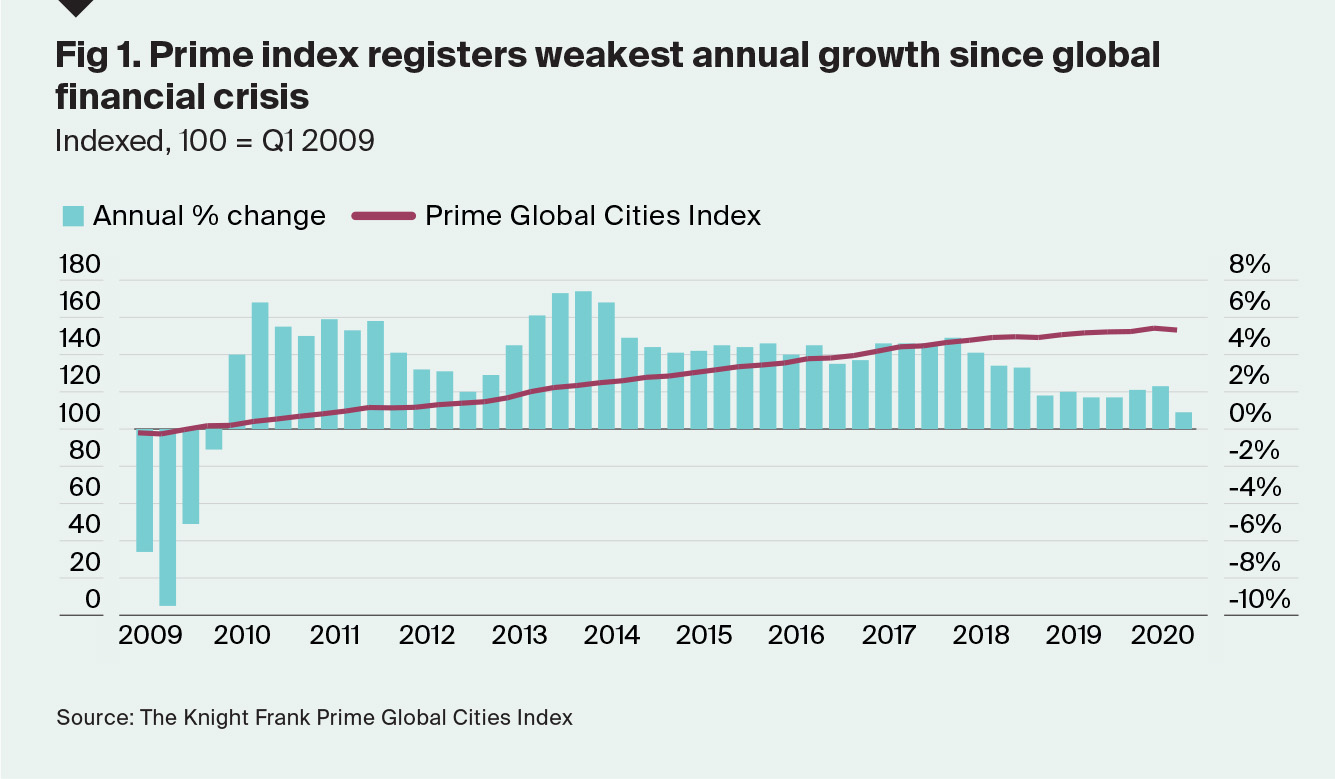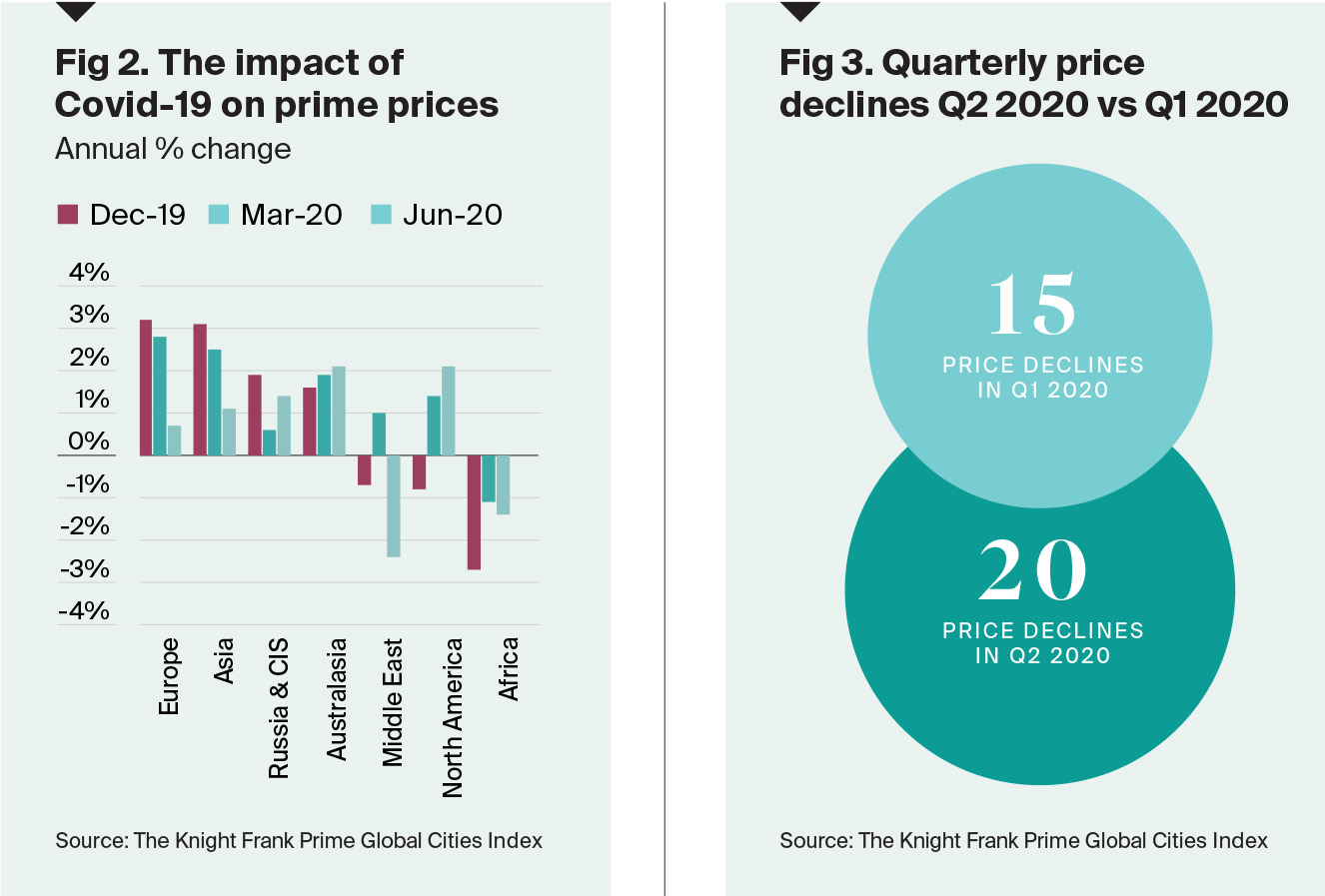Prime Global Cities Index Q2 2020
This is the first opportunity we have had to take the pulse of prime residential markets globally since the Covid-19 pandemic hit large parts of Europe and the Americas.
2 minutes to read
At the time of our last update (Q1 2020) Asia and parts of the Middle East were already reeling from its effects and this was evident in the index results – the five cities registering the weakest growth in Q1 were all in Asia.
Fast forward three months and the story, as well as the pandemic, has moved on. The index, an unweighted average of the change in prime prices across 45 cities, has reached its lowest rate of annual growth since Q4 2009 when the world was in the grip of the global financial crisis. Prices increased by 0.9% on average in the year to June 2020, down from 2.3% in March.

While our focus is usually on price performance over a 12-month period, to gauge the impact of the pandemic a look at data over the three months to June is most pertinent. Of the 20 cities that saw prime prices decline in the second quarter, nine were in Europe, seven in Asia, two in Australasia, one in the Middle East and one in Africa.
Analysis by world region shows prime prices in Australasia and North America were the most resilient in Q2 2020 (figure 2). In cities such as Sydney, Vancouver and Los Angeles higher value properties, often large detached homes, are in demand, which is supporting prime residential values in these regions.
In contrast, Europe and Asia saw average prime prices weaken significantly in Q2 2020, falling from 2.8% to 0.7% and from 2.5% to 1.1% respectively.

However, it is unlikely we will see a large volume of distressed prime sales as in 2008. Lending criteria is tighter, new supply is constrained in several cities, interest rates are low (negative in some markets), plus furloughing schemes and mortgage holidays are cushioning incomes and repayments.
Manila, Tokyo and Seoul are Asia’s top performers year-on-year, with Stockholm, Geneva and Paris leading Europe’s rankings. Nonetheless, five of these six cities registered flat or falling prime prices in the three months to June. We expect the index to display muted growth in the second half of 2020 before recovering in 2021.
See the full index here
For more details please contact Kate Everett-Allen